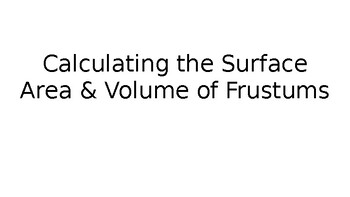Geometry Review: Similarity & Transformation with Hands-On Cultural Activity
- PPTX
Description
This was a project for my Mathematics Methods class at UCLA. As it turns out, I got a little carried away with it. I shared this activity with the math teachers at my school, and they appreciated it.
Please note that this activity should be completed only after lessons are provided to discuss area, surface area, volume, and transformation (dilation, rotation, and reflection). This project provides a hands-on activity to help students who are kinetic learners conceptualize transformation and understand its practical uses.
It was designed for a geometry class in schools with a Mexican-American population, but the activity can be adapted by selecting different pyramids or buildings and adapting the included table. The activity is a great way to have students reflect on the heritage and history of Mexican Americans while connecting this history to the identity of a mathematician.
You will find the worksheet for this activity under the "Materials" section of the document. It will need some slight formatting adjustments if you wish to print it as a worksheet. For outside materials, students should have or be provided with construction paper (likely about 2 - 3 sheets per group), a ruler, and a calculator.





